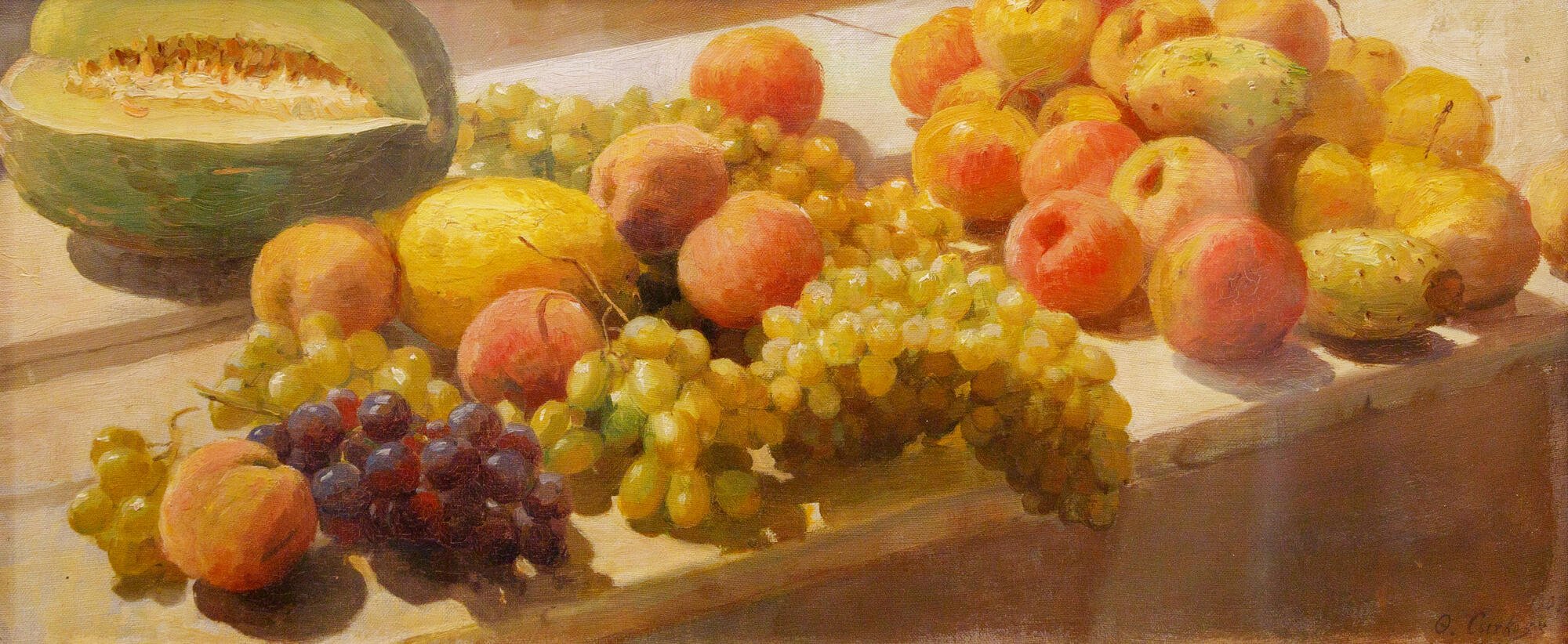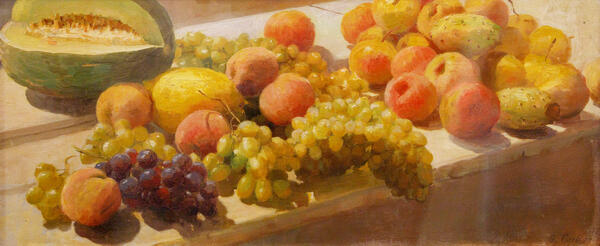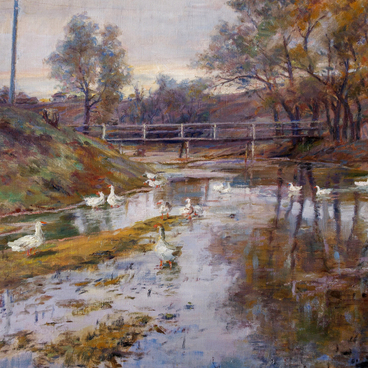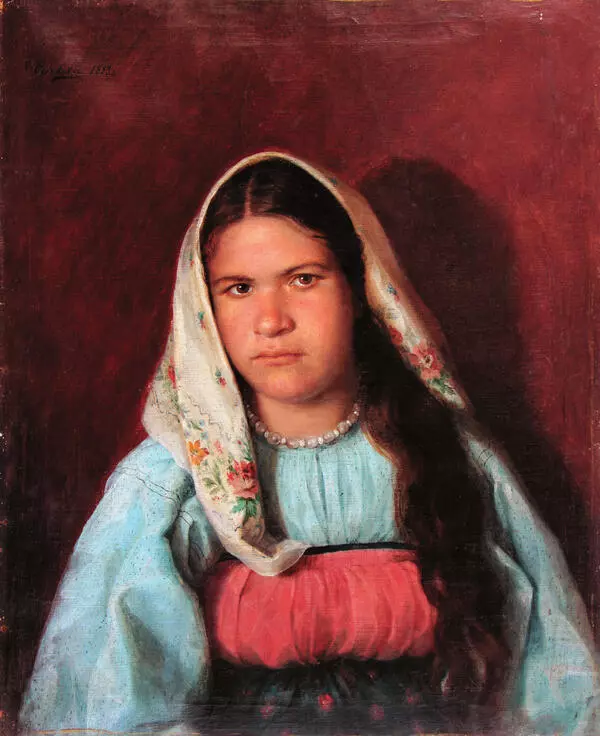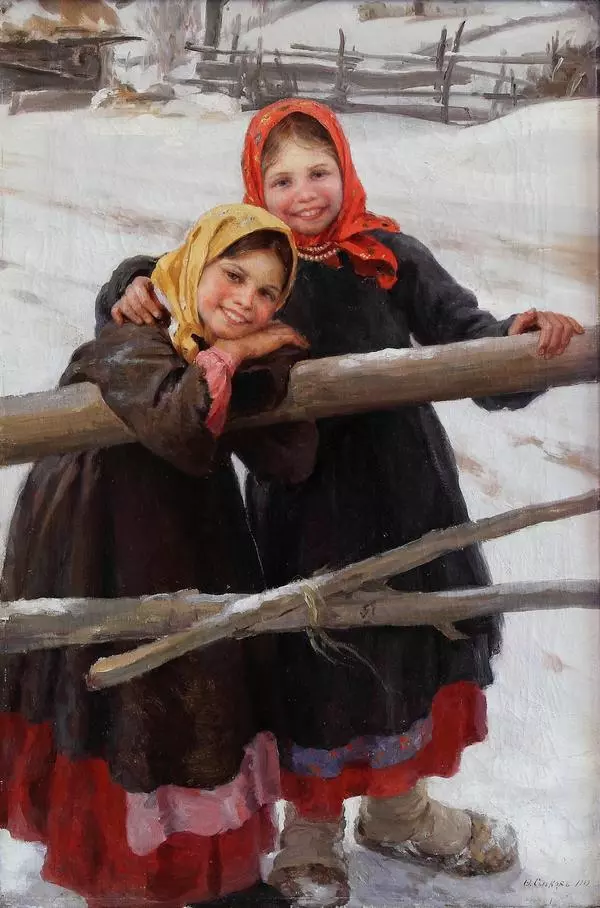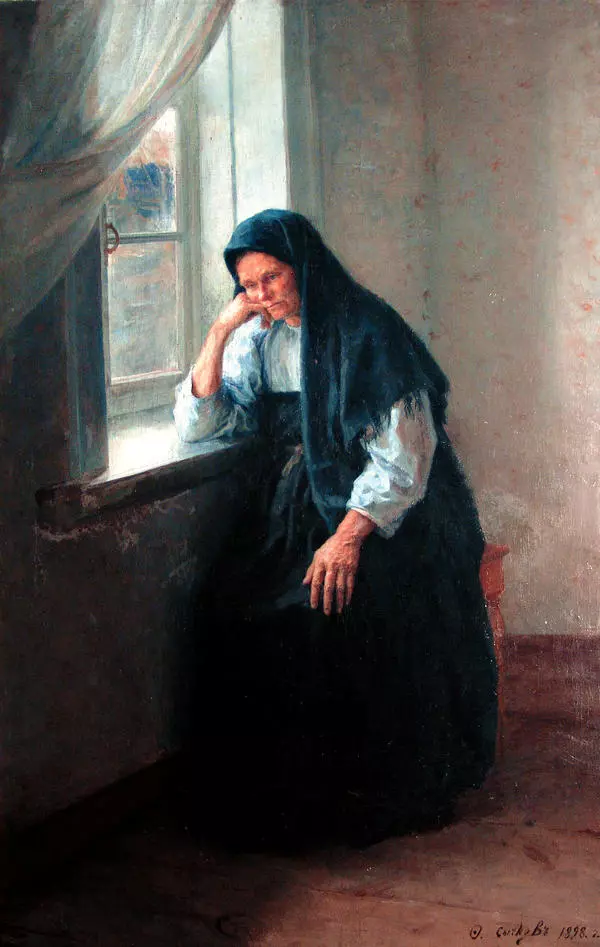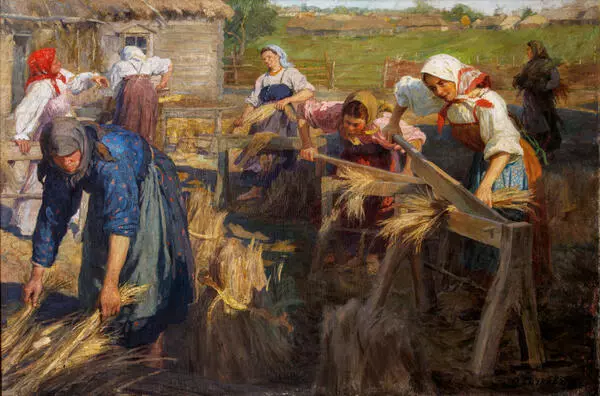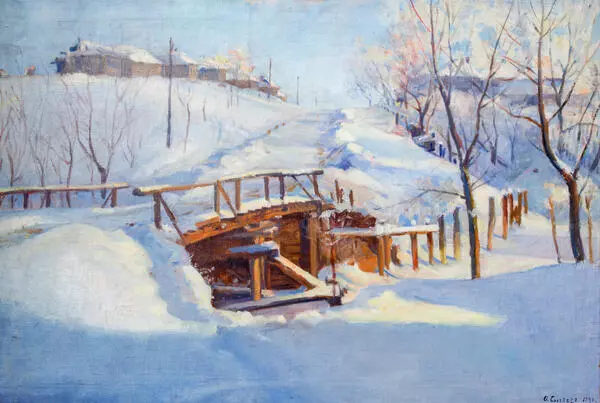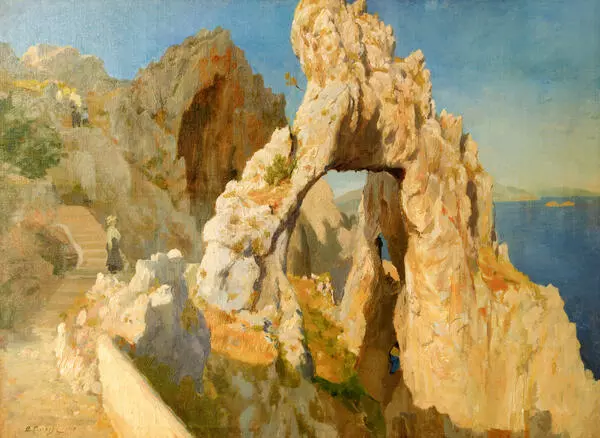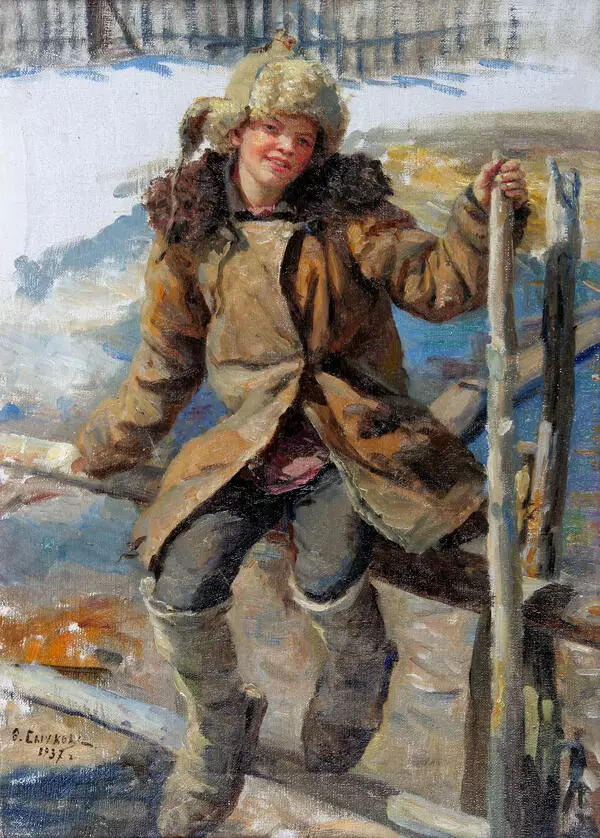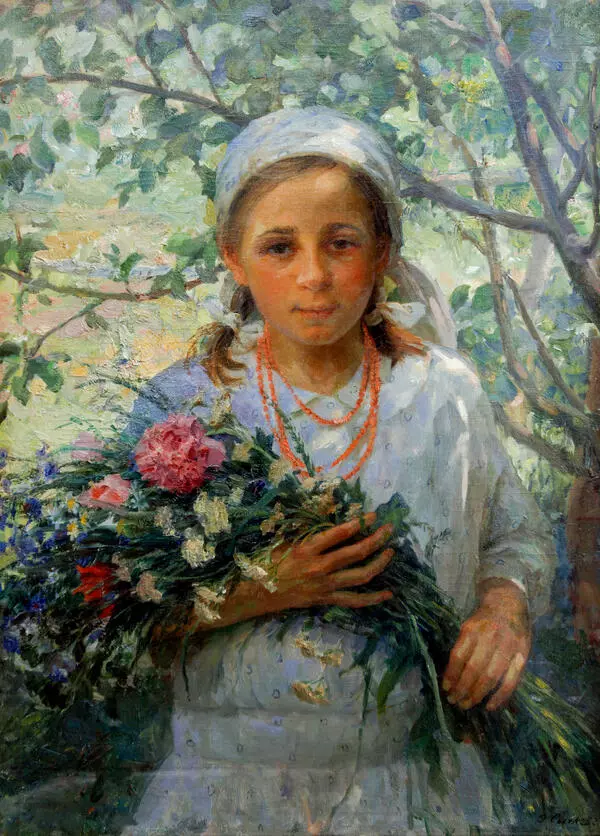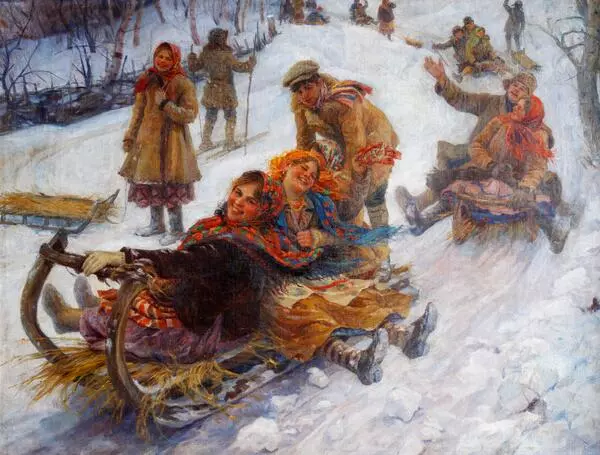Fedot Sychkov painted ‘Still Life. Fruits’ during his first and only trip to Europe in 1908. The artist, who lived in Central Russia, was not accustomed to the fruit of southern nature. He expressed all his admiration for exotic fruits in this still life. The painter meticulously depicted the texture of the fruit: the smooth and shiny surface of the grapes, the rough skin of peaches, and the slightly ribbed surface of two melons. Coral apples shine with a bright gloss. The artist was particularly attracted by the prickly surface of the unseen kiwano (Cucumis metuliferus) fruit called the ‘African cucumber’.
There is no source of light in the still life but the entire space is brightly illuminated. The warm golden color creates this effect in the picture. The color scheme is based on subtle shades of yellow, orange, pale red in combination with green and purple.
The still life is painted in the traditional academic manner: the master created volumes with light and shadow, showed realistic textures, carefully built the composition to have a depth effect. He did not dilute the paint to translucent thin layers but painted the picture with voluminous and dense brush strokes. This method helped to emphasize the relief of each fruit, its special density, and juiciness.
Fedot Sychkov honed his academic skills while studying at the workshop of the battle scenes painting with Nikolai Kuznetsov — a passionate man who loved art dearly and believed it should be realistic. The teacher used all of the Academy’s excellent equipment to create interesting scenes of common life for students. Kuznetsov kindled an interest in reality in his students and the ability to make it brighter even when depicting ordinary subject matters.
The teacher helped the painters to look for special color combinations, to emphasize vivid details, to include an interesting still life into a genre picture. The influence of Kuznetsov’s school was invariably reflected in the works of Fedot Sychkov. This can be clearly seen both in the still life of the Italian period and in various works that appeared later.
There is no source of light in the still life but the entire space is brightly illuminated. The warm golden color creates this effect in the picture. The color scheme is based on subtle shades of yellow, orange, pale red in combination with green and purple.
The still life is painted in the traditional academic manner: the master created volumes with light and shadow, showed realistic textures, carefully built the composition to have a depth effect. He did not dilute the paint to translucent thin layers but painted the picture with voluminous and dense brush strokes. This method helped to emphasize the relief of each fruit, its special density, and juiciness.
Fedot Sychkov honed his academic skills while studying at the workshop of the battle scenes painting with Nikolai Kuznetsov — a passionate man who loved art dearly and believed it should be realistic. The teacher used all of the Academy’s excellent equipment to create interesting scenes of common life for students. Kuznetsov kindled an interest in reality in his students and the ability to make it brighter even when depicting ordinary subject matters.
The teacher helped the painters to look for special color combinations, to emphasize vivid details, to include an interesting still life into a genre picture. The influence of Kuznetsov’s school was invariably reflected in the works of Fedot Sychkov. This can be clearly seen both in the still life of the Italian period and in various works that appeared later.
